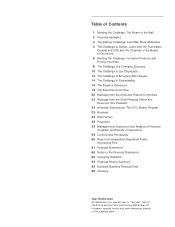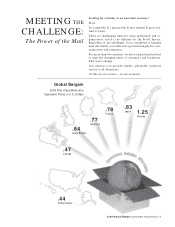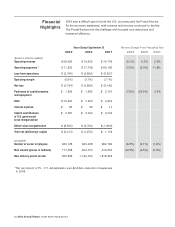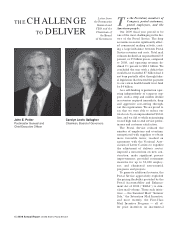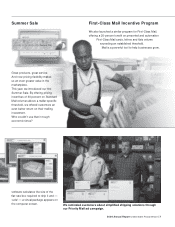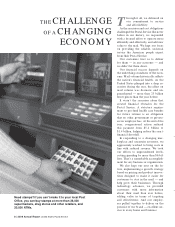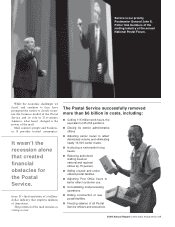US Postal Service 2009 Annual Report Download - page 6
Download and view the complete annual report
Please find page 6 of the 2009 US Postal Service annual report below. You can navigate through the pages in the report by either clicking on the pages listed below, or by using the keyword search tool below to find specific information within the annual report.
4 | 2009 Annual Report United States Postal Service
Letter from
the Postmaster
General and
CEO and the
Chairman of
the Board
of Governors
John E. Potter
Postmaster General and
Chief Executive Offi cer
Carolyn Lewis Gallagher
Chairman, Board of Governors
THE CHALLENGE
TO DELIVER To the President, members of
Congress, postal customers,
postal employees, and the
American people:
Our 2009 fi scal year proved to be
one of the most challenging in the his-
tory of the Postal Service. The deep
economic recession signifi cantly affect-
ed commercial mailing activity, creat-
ing a large imbalance between Postal
Service revenues and costs. Total mail
volumes declined an unprecedented 13
percent, or 25 billion pieces, compared
to 2008, and operating revenues de-
clined 9.1 percent to $68.1 billion. We
concluded the year with a defi cit that
would have exceeded $7 billion had it
not been partially offset through feder-
al legislation that lowered the payment
to our retiree health benefi t trust fund
by $4 billion.
As a self-funding organization oper-
ating independently of taxpayer sup-
port, such a steep and sudden decline
in revenues required immediate, deep
and aggressive cost-cutting through-
out the organization. We are proud to
say that we were able to reduce our
total costs by an unprecedented $6 bil-
lion, and we did so while maintaining
record high end-to-end service perfor-
mance and customer satisfaction.
The Postal Service reduced the
number of employees and overtime;
renegotiated with suppliers to obtain
more favorable terms; reached an
agreement with the National Asso-
ciation of Letter Carriers to expedite
the adjustment of delivery routes;
imposed a moratorium on new con-
struction; made signifi cant process
improvements; provided retirement
incentive for up to 30,000 employ-
ees; and eliminated non-essential
programs and projects.
To generate additional revenue, the
Postal Service aggressively exploited
the pricing fl exibility provided by the
Postal Accountability and Enhance-
ment Act of 2006 (“PAEA”) to stim-
ulate mail volume. Three such initia-
tives — the Standard Mail “Summer
Sale,” the Saturation Mail Incentive,
and most recently, the First-Class
Mail Incentive Program — all of-
fer price incentives on incremental


